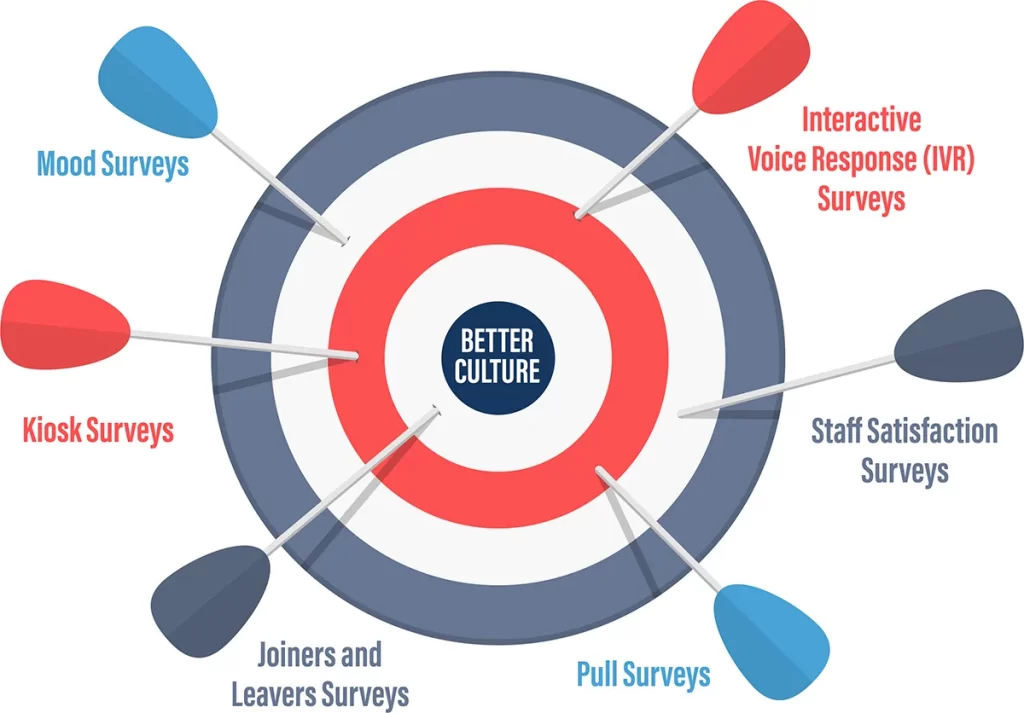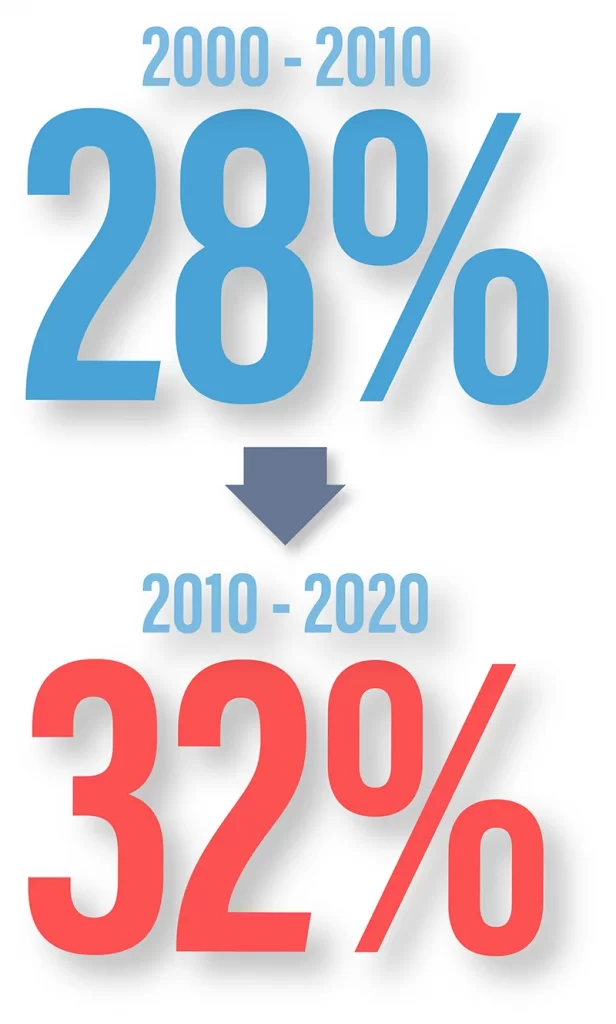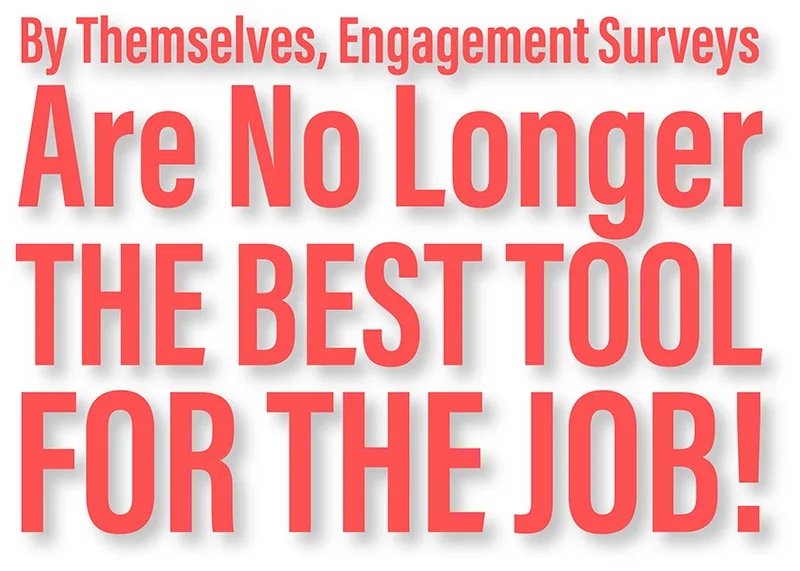
Disengaged employees cost U.S. businesses a staggering amount each year. A recent study put the figure between $450B and
$550 Billion
A recent joint study shows that fully a third of employees aren’t truly engaged in their job. The Engagement Institute, a collaboration of The Conference Board, Sirota-Mercer, Deloitte, ROI, The Culture Works, and Consulting LLP, released a study of 1,500 respondents showing that disengaged employees cost companies between $450 and $550 billion a year.
The study also found that employees assume most engagement initiatives should come from leadership; 95% of respondents recognize when they’re becoming disengaged. Compelling missions, highly trusted relationships, and well-designed jobs were all listed as elements that help employees take more responsibility for engagement.
To improve employee engagement, U.S. companies have invested
Millions of Dollars
in engagement surveys for decades.
U.S. businesses invest millions annually in employee engagement surveys. While not inherently flawed, employee engagement surveys used as the primary tool for measuring company culture are imprecise. However, organizations continue to pour resources into these surveys.
A fully-engaged workforce increases business performance, reduces absenteeism, helps attract and retain talent, and sustains competitive advantage, but the primary use of employee engagement surveys to gauge company culture is causing stagnation of results.
At the same time, the average number of engaged workers has only slightly improved.

According to Gallup, in 2018, the percentage of U.S. workers actively engaged at work (those employees considered involved, enthusiastic, and committed) was 34%. This figure ties its highest level since Gallup began reporting the national figure in 2000. Time to celebrate, right?
Looking deeper reveals a different story. The annual percentage of engaged US workers moved between a low of 26% in 2000 and 2005 to a high of 34% in 2018. Today, it’s 32%.
So for two decades, the average of actively engaged employees has remained unchanged at 30%!
For the same period, the percentage of “actively disengaged” workers have averaged 17% or roughly one disengaged employee for every two that are engaged. Despite running in place, businesses continue to invest each year on engagement surveys.
So What’s Not Working
Fixing employee engagement begins with a proactive understanding of how and why employees are engaged.


We’re not letting the air out of Employee Engagement Surveys altogether. They do have a time and place. But for truly measuring workplace culture, how it translates into performance, and determining how to improve it, they’re flawed.
Why?
Employee Engagement Surveys are flawed as a primary tool for measuring workplace culture.
They’re a Lagging Indicator
Surveys may be taken months from the events measured, let alone the subsequent compiling and analysis. This means you’re always dealing with outdated information that’s behind the curve.
Employee Responses are Subjective
Surveys can be vague, making employee responses difficult to understand. Asking about employee thoughts, emotions, and intents lead to answers based on inner experiences rather than facts.
Administered Too Infrequently
Surveys tend to have recency bias as employees focus on current events instead of a thorough view of the company and its culture.
Not On Target WIth Leaders Behaviors
Employee Engagement Surveys don’t connect to how front-line leaders practice the values and behaviors that embody your desired company culture.
So what can your organization do instead to measure and improve workplace culture and align it with performance?
Your company can manage its culture differently. If you are using employee engagement surveys to improve your culture, something needs to change. Surveys can be a helpful tool, but not the primary tool. An evolution in measuring company culture is needed in today’s workplace as employee loyalty is decreasing, leadership teams lack self-awareness, workers need better direction, employees are not getting recognition, and most cultures are decidedly mediocre.
Less than one-third of employees believe they have a strong company culture, and the top factor that predicts employee performance is the level of support provided by management. High employee performers rate the level of support they receive at an 8 out of 10, while low performers rate it at a 6 out of 10, according to a Kincentric report.
POWERS works next to frontline leaders to guarantee managers and employees see long-term process improvement with sustainable results. We analyze your company’s operational and financial opportunities through our discovery and assessment. Implement these opportunities and evaluate the savings—all aligned with an improved and operationalized culture to sustain the results. Contact us to learn more about how we can help.
To get more information like the blog you just read—PLUS exclusive content you won’t find on our site— subscribe to our free monthly newsletter today.

